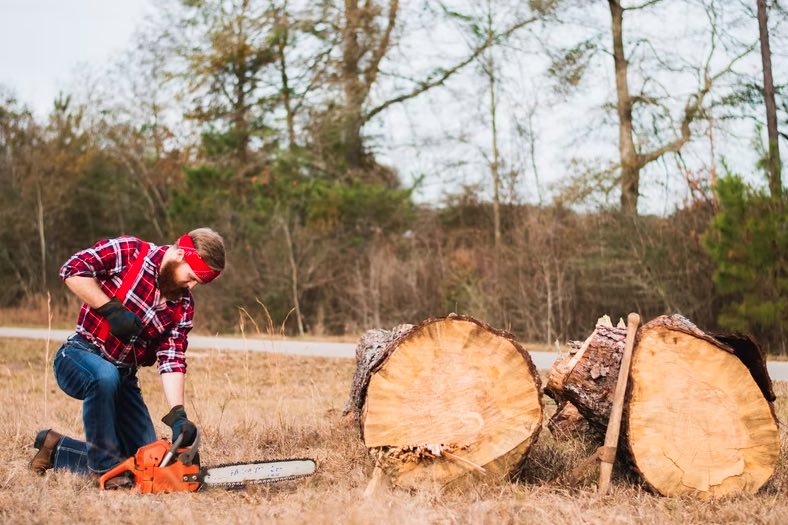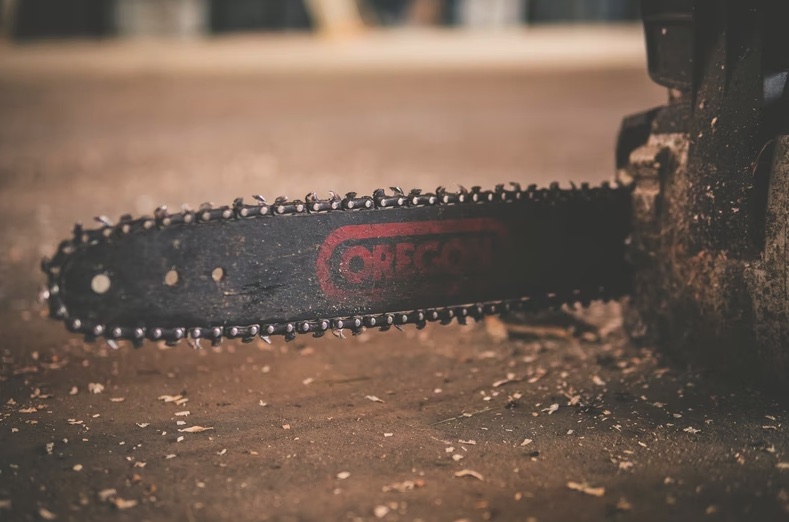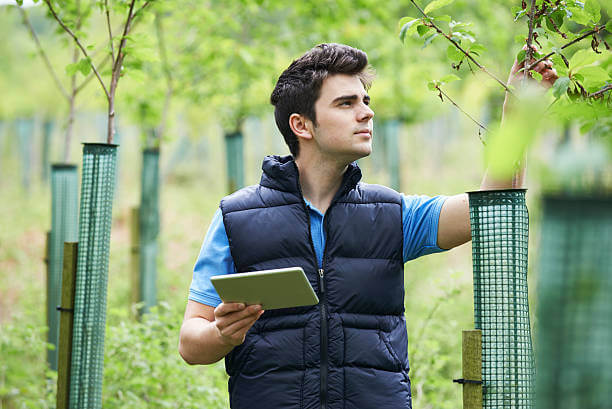Where do you stand on tree felling permits? There are a few things to think about before deciding to take down trees on private land. Even if a tree is diseased, broken, or in the wrong position, there are still laws to observe and fines from the city council to avoid before deciding to cut it down.
If a tree is not causing any damage or inconvenience, the owner has no legal responsibility to keep it in good condition. Obviously, it is in everyone's best interest for neighbours to work out their differences in a public setting whenever possible.
See if any laws prohibit pruning or removal of the tree before you do anything to it. If you remove native vegetation without following the Whittlesea Planning Scheme, you may risk prosecution and enforcement action. If you value biodiversity and want to make your neighbourhood more pleasant, we recommend planting trees in your yard.
To ensure that our city's trees continue to be a source of health and beauty, the Stonnington Planning Scheme and General Local Laws have implemented regulations limiting the pruning and removal of trees on private property.
Removal Of Trees
In light of the importance people place on trees, the city council won't even think about cutting one down before an arborist has inspected it and determined whether or not doing so would be in line with the Street Tree Policy. To be removed are trees must either be:
- Dead
- Dying
- Structurally unsound
- Likely to be seriously damaged or likely to become hazardous as a result of other approved infrastructure works
Let's assume the tree is in good shape and poses no more than a manageable threat. If so, it'll be kept around to continue providing the same environmental and social benefits. Due to the following factors, we rarely cut down trees:
- Leaves, twigs, and/or fruit fall from the tree.
- That tree is casting too much shade.
- The Dimensions of a Tree
- Disapproval of a plant because of its appearance or location
- Demolition and cleanup
Before considering a request to remove a tree due to allergies, Council requires medically validated allergy testing findings. Community input will be sought prior to any tree cutting or planting by the Council. Consultation depth will vary by project scope and complexity. If it is necessary to remove the tree, a new tree will be planted in the same spot, or close by if a different area is deemed more suited.
Cutting Down Trees On A Residential Property
We highly advise homeowners to keep the trees they already have on their land and to plant new ones if they are cut down. Removal of trees on private property does not require Council approval unless the tree is over 450mm in diameter at chest height, is subject to an overlay in the Hobsons Bay Planning Scheme, or is protected by another planning permit. In these circumstances, you must obtain approval from the local council before beginning construction.
Do I Need Permission To Cut Down My Tree?
Calling or visiting your local Council's website is a good idea before removing a tree, as rules and restrictions on tree removal and pruning differ from Council to Council. Listed below are some examples of the kind of items that will be considered by various Australian authorities when you apply for a permit. Gold Coast tree cutting standards are used as an illustration of this concept.
In an effort to preserve its tree canopy, the City of Victoria passed the Tree Preservation Bylaw (especially those which are native or have significant heritage value). Victoria is home to one of the region's rarest woods. There are rules in place to prevent trees from being cut down or damaged because of development, disease, or simple annoyance. Prior to cutting down a tree, you should find out if it is on a protected list. These native species are under strict protection:
- Oregon White Oak
- Big Leaf Maple
- Pacific Madrone
- Douglas Fir
- Pacific Dogwood
- Western Red Cedar
- Pacific Yew
If the tree or trees are not exempt, complete the tree inspection form online and pay the price for an inspection. The initial tree will cost you $220, and each additional tree will cost you $95.50. After that, an arborist will go over the tree or trees and provide a written report on their health. You can expect a copy of the report and a letter from the city outlining the proposed repairs. If you want to undertake the things we suggest, you won't require a building permit.
Exceptions to Local Law Permit
A permit is not necessary to cut a tree protected by the Local Law under specific circumstances; examples are:
- The cutting away of the tree's branches that are directly over someone's head or onto their land. Under this exception, just the portion of the tree that constitutes an imminent risk may be cut down.
- When the job is carried out by an arborist trained to AQF Level 3 in Arboriculture, or higher, or similar acknowledged and relevant experience. All work must be done in accordance with AS 4373:2007, Pruning of Amenity Trees in Australia. The contractor must validate their work, including images of before and after work.
Tree Cutting For Construction
The removal of natural vegetation is discouraged in all planning plans in Victoria. If removal is unavoidable, it should be as brief and as painless as possible through careful preparation and design. If plants are lost due to no fault of your own, you may need to compensate by adding more plants or relocating others.
Maintaining a healthy and secure tree population requires constant care, including regular trimming, lopping, pruning, shaping, and health evaluations. Different species have various maintenance needs. The benefits to your home from this type of routine maintenance are many. If you take care of your trees, they will provide beauty to your yard without causing any unnecessary clutter. A tree's structural integrity and healthiness are both improved by routine inspections. It's common knowledge that trees need to be maintained, but city governments employ tree safeguards to make sure this doesn't happen in a way that threatens the local environment or unique culture. One standard condition of these safeguards is that the job be performed by a certified Arborist in accordance with Australian Pruning Standards.
Taking down hazardous trees is a vital part of maintaining a safe and sustainable neighbourhood ecosystem. Deteriorated trees pose a threat to nearby humans, animals, and property due to their age, illness, injury, or neglect. Hazards posed by unhealthy trees range from the nuisance of loose leaves, sticks, and branches to the complete collapse of the tree itself. On the other hand, tree cutting is strictly regulated by all Victoria, Australia, councils. These regulations are set up to protect the city's tree canopy and stop the careless felling of healthy trees.
If the tree in question is particularly enormous, old, or native to the area, you will likely need to apply for a permit from your local Council before having it cut down. Commonly associated with such authorisations are application costs. The potential cost of a fine for illegal tree removal substantially outweighs the cost of the permit.
How Do I Report A Problem With A Tree?
Influence of Storms
Residents can call the Council at (02) 9932 1000 if there are any urgent tree issues, such as a fallen or hanging branch (24 hours). In the aftermath of severe weather, the Council will prioritise proposals that pose a threat to human safety, such as:
- Tree or branch down, blocking road or preventing entry to property.
- A tree or limb landed on a power line.
- An unstable tree or branch could cause injury or property damage.
The Council will remove rubbish and branches and address other tree-related concerns, such as branches blocking walkways, when it has ensured the trees are made safe. Until the urgent repairs are done, our regular tree maintenance schedule may be put on hold.
Reporting Tree Maintenance or Pruning
Any problems with upkeep can be addressed directly to the Council online. You can help us out by providing an image of the tree so we can better serve you. If you want, you can also reach Council by dialling (9932) 1000.
Tree Roots Damage Stormwater Pipes
It's possible that trees aren't the main culprits when it comes to causing costly repairs to homes and businesses. Pipes that have been properly built and maintained can withstand the regular pressures caused by tree roots and vehicle traffic. Poor pipe maintenance can allow tree roots to enter the pipe through leaks or seams, but ground movement caused by things like
- foundations that aren't up to par
- limited stormwater discharge due to poor drainage
- broken, dripping pipes that supply water or waste
- joint failure in earthenware/terracotta and plastic (PVC)
- noise from work being done nearby
- property alterations
- stations for utilities like gas and Telstra
- Stopping in designated parking areas near parks and other green spaces
A homeowner should check to see that all of the pipes on their property are properly sealed to stop the infiltration of roots. Council will only give permits to property owners under the Local Government Act for works relating to building stormwater and drainage pipes. Even though a connection is made possible by using Council-owned land, no ownership rights in the underlying connection pipe are transferred.
Let's say you've discovered what you think is damage caused by a Council street tree. In that scenario, you'll need to present a geotechnical (soil engineer) report on the location alongside images to prove that the Council tree is directly to blame for the damage. This can assist determine if the pipe was broken for some other reason or if the problem was caused by tree roots from the Council.
A property owner can file a claim for compensation from the Council for loss or damage caused by an incident involving street trees by filling out a Request for Compensation form if they can provide evidence that mechanical displacement of pipes was caused by a large tree root and pipe failure occurred. Council trees that have been shown to be damaging private property will be retained after our arborist reviews preventative methods to stop the impact. The tree could be cut down as a last option.
Disputes Between Neighbours
Overhanging branches, damage from roots and falling leaves can all contribute to disputes between neighbours over trees on private land. Go to Victoria, Australia's Dispute Settlement Centre to find out your legal options for dealing with a disagreement about a tree.
Approach To Reviewing
You have the right to request a review of the arborist's findings and decisions if you are dissatisfied with them. The Coordinator of Trees shall evaluate the request for a review of the tree removal decision, conduct additional inspections of the tree, and make suggestions based on the results of these inspections.
Conclusion
The owner of a tree has no need to maintain it if it is not causing any harm or difficulty. There may be legal repercussions for violating the Whittlesea Planning Scheme by cutting down native plants. Regulations limiting tree pruning and removal have been enacted as part of the Stonnington Planning Scheme and General Local Laws. Unless the tree has a diameter of more than 450mm at chest height, is covered by an overlay in the Hobsons Bay Planning Scheme, or is otherwise protected by another planning permit, removal of trees on private property does not require Council approval. Some exceptions exist in the Local Law that allow for the felling of protected trees without a permit.
Constant care, including trimming, lopping, pruning, shaping, and health assessments, is required to keep a tree population healthy and secure. Councils in Victoria, Australia, have very stringent rules on tree cutting. By enforcing these rules, the city hopes to prevent the needless destruction of its tree canopy. The Council will give higher priority to requests that address imminent danger to human life, such as a fallen tree or limb blocking a road or impeding access to a property. If there are any urgent tree issues, locals can contact the Council at (02) 9932 1000.
Our regularly scheduled tree maintenance may need to be postponed until the immediate repairs are completed. After an arborist analyses mitigation strategies, the council may decide to keep private trees that are causing damage. If a homeowner can prove that a large tree root dislodged pipes mechanically, they can file a claim for reimbursement from the Council for the costs associated with the incident.
Content Summary
- Before opting to cut down trees on your own property, there are a few things to consider.
- When considering whether or not to remove a tree, it is important to consider not only whether or not it is unhealthy, broken, or in the incorrect place, but also whether or not doing so will violate any local ordinances or result in a fine from the city council.
- The owner of a tree has no need to maintain it if it is not causing any harm or difficulty.
- If a dispute arises between neighbours, it is in everyone's best interest for them to resolve it in a public forum.
- Before you do anything to the tree, check to see if any regulations forbid you from doing so.
- There may be legal repercussions for violating the Whittlesea Planning Scheme by cutting down native plants.
- Planting trees in your yard can benefit wildlife and make your neighbourhood more pleasant.
- Stonnington Planning Scheme and General Local Laws have adopted measures to prohibit the pruning and removal of trees on private land to guarantee that our city's trees continue to be a source of health and beauty.
- Recognizing the value that citizens place on trees, the city council will not consider removing one unless and until an arborist has decided that doing so is consistent with the Street Tree Policy.
- vulnerable to major disruption or imminent danger as a result of other approved infrastructure projects.
- Assume the tree is in quite good form and poses no more than a minimal threat.
- If this is the case, it will be maintained so that it can keep contributing to the same environmental and social good.
- There is just too much shadow from that tree.
- Rejection of a plant on aesthetic or geographical grounds.
- Council requires allergy testing results that have been certified by a medical professional before they will accept a request to remove a tree owing to allergies.
- When the Council decides to chop down or plant trees, they will first solicit community feedback.
- The extent of consultation will be determined by the size and complexity of the project.
- Unless the tree is over 450mm in diameter at chest height, is subject to an overlay in the Hobsons Bay Planning Scheme, or is protected by another planning permit, removal of trees on private property does not require Council approval.
- Therefore, before to beginning construction, you must seek and receive consent from the relevant municipal authorities.
- Rules and regulations on tree removal and trimming vary from Council to Council, so it's a good idea to call or check the website of your local Council before beginning any tree removal or pruning projects.
- The following are some examples of the kind of things that will be taken into account by various Australian agencies when you apply for a permit.
- Guidelines for cutting down trees on the Gold Coast are utilised to illustrate this idea.
- The City of Victoria has adopted the Tree Preservation Bylaw to protect its tree cover (especially those which are native or have significant heritage value).
- One of the region's rarest woods may be found right here in Victoria.
- Trees are protected by law and cannot be removed or harmed for any reason, including development, disease, or even mere inconvenience.
- Make sure the tree isn't on any preservation lists before chopping it down.
- It will cost you $220 for the first tree, and $95.50 for each additional tree.
- Next, an arborist will examine the tree or trees and offer a written report on their condition.
- The city will send you a letter detailing the planned repairs and a copy of the report.
- You won't need a building permit to do the things we recommend.
- Pruning is the process of removing branches from a tree that are blocking a person's view or encroaching on their property.
- As long as the tree poses an immediate threat, only the hazardous part needs to be removed.
- when the work is done by an arborist with at least AQF Level 3 in Arboriculture training, or equivalently recognised and applicable experience.
- The Australian Standard for the Pruning of Amenity Trees, AS 4373:2007, must be followed religiously.
- The contractor must provide evidence of their work, such as before and after pictures, in order to get paid.
- In all of Victoria's various planning schemes, eradicating natural vegetation is strongly discouraged.
- If removal is unavoidable, it should be as brief and as painless as possible through careful preparation and design.
- In the event that you suffer plant loss via no fault of your own, you may have to make up for it by purchasing replacements or transplanting existing plants.
- Constant care, including trimming, lopping, pruning, shaping, and health assessments, is required to keep a tree population healthy and secure.
- Each species has unique upkeep requirements.
- Performing this type of regular maintenance has numerous advantages for your home.
- A well-cared-for tree or group of trees will add aesthetic value to your yard without requiring any more maintenance.
- Regular checks on a tree's health and integrity can do wonders for its vitality and longevity.
- It is widely understood that trees require maintenance, but in order to prevent any potential damage to the environment or cultural traditions, city governments have implemented tree safeguards.
- These precautions typically include requirements like having a qualified Arborist do the work in compliance with Australian Pruning Standards.
- Safe and healthy community ecosystems rely on regular tree removals.
- Aged, sick, injured, or neglected trees are a hazard to humans, animals, and property in their vicinity.
- Unhealthy trees can be a hazard in many ways, from simply being an eyesore due to falling leaves, branches, and even the trunk.
- However, all councils in Victoria, Australia have stringent rules about cutting down trees.
- By enforcing these rules, the city hopes to prevent the needless destruction of its tree canopy.
- It is likely that you will require a permit from your local Council if the tree in question is very large, old, or a native to the area.
- Commonly, fees are expected to be paid when submitting an application for such permissions.
- If there are any urgent tree issues, such as a fallen or hanging branch, residents can contact the Council at (02) 9932 1000. (24 hours).
- A piece of tree or a branch fell onto a live wire.
- An unstable tree or branch could cause injury or property damage.
- After ensuring the trees' safety, the Council will remove trash and branches and solve other tree-related issues, such as branches blocking walkways.
- Our regularly scheduled tree maintenance may need to be postponed until the immediate repairs are completed.
- Online maintenance requests can be submitted directly to the Council for their attention.
- In order to further assist you, we would appreciate it if you could send us a picture of the tree.
- It's probable that trees aren't the primary source of damage to buildings and the associated repair bills.
- Pipes can survive the normal pressures created by tree roots and vehicle traffic if they are properly constructed and maintained.
- In accordance with the Local Government Act, the only types of construction work for which the council will issue permits to property owners are those involving the installation of stormwater and drainage pipes.
- While the use of Council-owned land facilitates a connection, no rights to the underlying connection pipe are transferred.
- Now imagine you've found what appears to be damage to a Council street tree.
- To prove that the Council tree is to blame for the damage, you will need to provide a geotechnical (soil engineer) report and photographs of the area in question.
- This can help establish whether tree roots were the actual cause of the pipe break or whether the pipe was broken for some other reason.
- If a property owner can prove that mechanical displacement of pipes was caused by a huge tree root and pipe failure happened, then they can file a claim for compensation for loss or damage from an occurrence involving street trees with the Council by filling out a Request for Compensation form.
- Council trees that have been shown to be hurting private property will be retained after our arborist analyses preventative ways to stop the damage.
- When everything else fails, you can always just chop down that tree.
- Trees on private property can be a source of tension between neighbours due to factors such as overhanging branches, root damage, and dropping leaves.
FAQs About Cutting Down Trees On My Property
Any person who shall cut, destroy or injure trees, flowering plants and shrubs or plants of scenic value mentioned in the preceding sections of this Act, shall be punished by prison correctional in its minimum period to prison mayor in its minimum period. SEC.
The Environmental Protection Act 1986 (EP Act) requires that any person clearing native vegetation must hold a permit, unless the clearing is for an exempt purpose. These laws apply to private and public lands throughout Western Australia.
If you own your home, you don't need permission to fell a tree that's solely within your garden unless it's: subject to a Tree Preservation Order.
Your neighbour can cut any branches that are overhanging into their garden as long as they only remove the bits on their side of the boundary. If they want you to cut your tree or hedge just because they don't like the way it looks, it's up to you whether you do the work.
You can find out if a property has any trees that benefit from a Tree Preservation Order (TPO), or if they are located within a Conservation Area, using the Southwark conservation and tree preservation orders (TPO) map. You can use the TPO link on the map to see a scan of the Tree Preservation Order itself.




